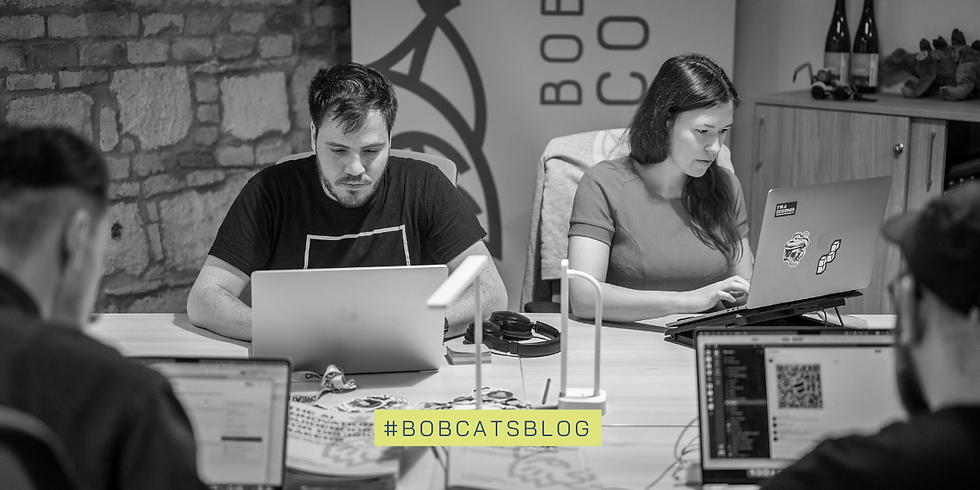How AI can help you to figure out where to place your “digital bets”
- Barnabás Hegyi

- Aug 26, 2024
- 4 min read
Innovativeness and long-term growth can only be achieved through a thoughtfully crafted strategy. As digital products are no exception, product development teams must also make informed decisions about where to put their bets on the table. This requires them not only to address present needs but also foresee upcoming changes. But how to efficiently cut through the continually increasing information noise around us and unravel what the key developments in the digital world are? Scroll down to find out whether the answer to the question is “using AI”.

Product strategy is not a fixed, one-time plan but it entails adapting tactics from time to time to react to the rapidly changing business environment. A well-grounded strategy, which nurtures innovation, makes it possible to stay ahead of competitors and capture new market opportunities requires digital product development teams to make considerable efforts to constantly anticipate and monitor, for instance, emerging social trends, technological advancements and regulatory changes in the digital world. At this point the question inevitably arises these days: can AI be a potential remedy for these innovation related human resource challenges as well?
In its yearly Hype Cycle for Innovation Practices publication, Gartner defines AI-driven innovation as “a process that harnesses the power of AI technologies to accelerate innovation”. According to the paper, while it will have transformational benefits, its current market penetration is between 1% and 5% only, whereas its mainstream adoption will take more than 10 years, the highest lag time for all the innovation practices on the hype curve. At the same time, the analysts expect AI-driven innovation to have an impact already in the short term, namely in areas such as trend identification and technology scouting. But are there really such solutions out on the market that we can leverage already?
A company with notable AI-driven innovation solutions is Itonics, which provides a free and easy-to-use toolbox of custom conversational AI assistants for e.g. gaining rapid insights into various industries and finding trends, emerging technologies, startups and possible regulative changes. Special assistants are the “future friend” contemplating the plausible future of the world, the “opportunity oracle” for connecting trends with the strengths of your company and identifying innovation opportunities as well as the “growth navigator” helping with getting insights on the market potential of opportunities.
When it comes to detecting the first signs of emerging trends, Itonics’ solution applies a hybrid intelligence approach. After the topic theme is provided by a human, e.g. the end user, it is an AI what scans the news sites, RSS feeds, patents, and scientific and technology publications and collects the data that is relevant to the scope. In the next step, the AI analyzes the data points by organizing the ones with similar topics into clusters and generating titles and brief summaries for the clusters. Finally, it is mostly a human again who assesses which of the clusters have relevance, potential impact and strategic implications.
The other solution we are introducing here is that of Wonder, which using its AI-augmented on-demand desk research platform, offers, for instance, carrying out a SWOT analysis, exploring opportunity spaces, creating a competitive landscape analysis as well as ROI and market sizing. Wonder’s knowledge assembly line works as follows.
First, the company’s AI-powered conversational clarification engine gathers all the relevant context around your need, recommends overlooked angles to explore and proposes a research plan. Then as an appetizer, the platform gets you relevant, actually-accurate preliminary insights supported by fully-cited sources and verifiable hard data in minutes. Finally, with your go-ahead, Wonder’s (human) research analysts trained on your industry as well as the leading LLMs and their research-relevant plug-ins, verify the preliminary insights and extensively augment them with custom research to produce you a report in hours. The process is accelerated by the company’s proprietary automation tools that intelligently query, extract and synthesize data from credible sources.
Why did we go into the details in these examples? Let’s break it down:
Transparency matters: Understanding AI outputs is crucial to prevent "black box" decision-making.
AI-driven innovation is still far from maturing: Though AI can largely augment quite a few stages in the processes, a non-negligible portion of those still requires human involvement.
It’s worth decoding AI: To properly evaluate an AI solution along critical dimensions—as we do in our The Design Automation Scale research paper—one needs to delve deeper into the specific workings of each solution.
As in many other areas, AI holds the promise of democratization in the field of innovation as well. Thanks to the efficiency gains AI can deliver, now SMEs and small teams are gaining access to solutions helping them to smartly place their bets. And even though, as we saw, AI-driven innovation is in its infancy now, to maintain their competitiveness, we encourage digital product development teams to start experimenting with the current solutions. There are ones out there on the market e.g. with a pay-as-you-go option for ad hoc use along with others that have a trial period or are free of charge.
Product School (2023): Digital Product Strategy – A Guide For Digital Product Leaders
Gartner (2024): Hype Cycle for Innovation Practices
Itonics (2024): Monitoring Technologies & Trends: How to Accelerate Weak Signal Detection
Itonics, Rohrbeck Heger & EDHEC (2022): AI-Enabled Foresight: Towards 2025
Mühlroth et. al. (2023): Innovation signals: leveraging machine learning to separate noise from news




Comments